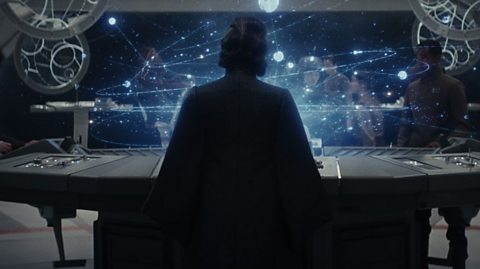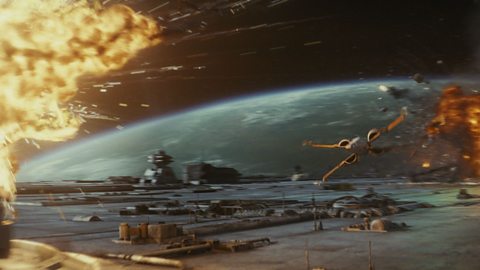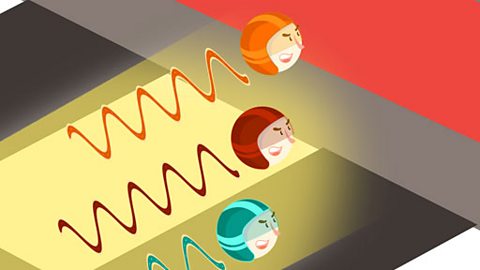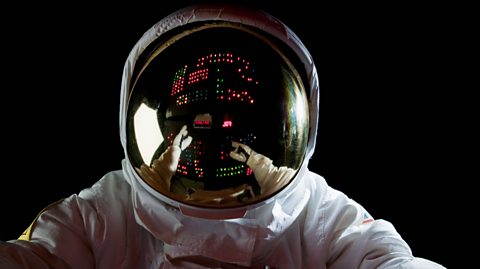A long time ago, in a galaxy far, far away, the Star Wars franchise entered a period of civil war with the laws of physics.
Sci-fi movies do like having a bit of fun with the fundamental aspects of our universe, but is there anything they get right?
4D cinema
One thing that George Lucas may have been on the right track about, according to some scientists, is hyperspace - a ã4th dimensionã that allows you to travel to places really far away faster than the speed of light. In the movies, this is done by activating a spaceshipãs ãhyperdriveã.

That in itself seems impossible, as light travels faster than anything else in the known universe. But some theories have suggested that ãwormholesã - essentially tunnels between two points in space - could get around this.
One way of imagining them would be with a piece of paper, with you on one side, and where you want to be on the other. As it currently stands, to get from A to B, youãd have to travel all the way up your side of the paper and then back down the other.
But if you fold it in half and poke a hole through, you then have a tunnel that gets you there much faster. This is (roughly) how wormholes are thought to work, and could explain how Han Solo and the gang get across the universe so quickly.
A weapon proton-type
There are other things in Tatooine and beyond that are loosely based on real science. One example of this is the ãproton torpedoã that is used to penetrate the Death Starãs shields and eventually destroy it in A New Hope.
These extremely powerful proton beams may not have been developed to destroy spaceships yet, but we do use something similar to destroy tumours. One form of cancer therapy uses beams of protons to target tumours in hard to reach parts of the body. They can trace around the growths with extreme precision, making it an effective way of treating more complex cancers.
Relight my fire
So there are parts of the Star Wars universe that are somewhat rooted in fact. But donãt worry, thereãs plenty that it gets wrong, too.
One classic trope used in pretty much every sci-fi film is a huge explosion in space. During opening battle sequences in Star Wars, itãs not uncommon to see lasers flying here, there and everywhere, and a spaceship going up in flames when hit.

However, itãs quite hard for a big ball of fire to be created in an environment with little to no oxygen, given it needs oxygen to sustain itself. In reality, any such explosions would be a lot smaller, and quickly sucked into a vacuum.
These battle scenes and the explosions that are such a staple of them are also really noisy on-screen. In real-life though, theyãd be very quiet, as sound canãt travel if thereãs no air.
There is a light(saber) - and it never goes out
One thing in particular that has fascinated fans and scientists alike is the lightsaber. There are different theories about whether or not the weapons powered by the Force are possible - only a Sith deals in absolutes.
Taking the name literally, some people think that theyãre meant to be made of light or, more accurately, lasers. The problem with this is though, is that the laser beam wouldnãt ãstopã - that is to say, light carries on travelling until something obstructs it, so in theory lightsabers could be ten foot long, to a hundred feet long, depending on the Jediãs surroundings. Also, as you know if youãve ever teased a cat with a laser, you canãt touch them, so they wouldnãt be able to inflict much damage.

Others though think they could potentially be made out of other substances, such as super-charged plasma. Plasma is the fourth known state of matter in the universe, after gasses, liquids and solids. Theyãre made up of electrically charged particles, and therefore have a magnetic field, so in theory could be fashioned into a blade using magnets.
However, if and when a Jedi fights a Sith, these magnetic fields would be disrupted, so instead of a really cool battle, youãd just be instantly covered in plasma soup, and probably hurt yourself as much as youãd hurt your opponent.

Scientists at MIT and Harvard in the States actually tried to make a lightsaber, or at least create the substance one could be made out of. They did this by combining photons to create a ãphotonic moleculeã which behaves as though it has mass, but also has similar properties to light. This substance hasnãt been fashioned into a sword yet though.
Clearly then, itãll be a long time before we can start jumping through hyperspace to defeat Kylo Ren some place across the galaxy. But silly insignificant details such as the laws of physics wonãt get in the way of the Jedi and the Sith.
This article was published in May 2019
GCSE Physics
Head here for everything you'll need to revise for your Physics GCSE.

What is light?
Lightsabers produce light, but what is it?

Science fiction or science fact?
It's a Bitesize quiz, Captain, but not as we know it...
